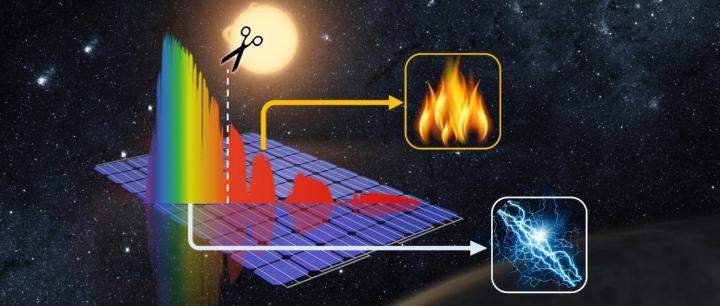Photovoltaic-thermal (PVT) solar panels have barely been developed thus far, compared to PV modules and solar-thermal panels. This is mainly due to their lower overall efficiency and longer payback times, as well as a number of technical challenges. Although a considerable number of PVT products are currently available for sale, such panels are usually produced by small companies on a limited scale, for sale in niche markets.
The combination of PV generation and heat production on a single device has not become attractive enough for consumers yet. But a research group from Imperial College London and Zhejiang University in China believes that this technology has strong potential for improvement. They have therefore created a framework to predict its performance and efficiency limits.
The scientists said that the choice of PV technology and the improvement of spectral-splitting (SS) filters, which are used to split the solar spectrum, will be key for the future success of PVT devices. These filters exploit the partial spectral sensitivity of PV cells and minimize, through different designs, the thermal coupling in PVT modules. This means that spectral splitting can direct different parts of the solar spectrum to suitable receivers, while avoiding the high temperatures of the thermal collector, which can compromise the efficiency of the PV devices.
However, there is still a lack of consensus about SS filters and their optimal design, operating conditions, and ultimate potential, the researchers said. “We have demonstrated that, if designed and operated appropriately, spectral-splitting photovoltaic-thermal collectors always have a higher efficiency than any combination of conventional solar PV panels and solar-thermal collectors,” said researcher Christos Markides, adding that current PVT devices rely on one of two spectral-splitting approaches, based on either absorptive optical filters or selectively reflective variants.
The first filter lets part of the solar spectrum pass through to the PV cells and then reflects the rest to a thermal absorber. The second filter only lets part of the solar spectrum go through to the PV cells. The British-Chinese group said that the efficiency of a PVT device depends on a coefficient that considers the relative value of thermal energy to that of electricity.
“Assuming that thermal losses can be minimized, the efficiency limit, optimal PV material and optimal filter all depend strongly on a coefficient ‘w,' which quantifies the value of the delivered thermal energy relative to that of the generated electricity,” the scientists explained. “The total (electrical plus thermal) efficiency limit of SS-PVT collectors increases at higher w and at higher optical concentrations.”
Popular content
The overall efficiency of the SS-PVT panels is particularly sensitive to the bandgap energy of the PV material when “w” is lower than 0.5. The scientists claim that this corresponds with scenarios in which the electricity is at least twice as valuable as the generated thermal energy. They also said that photovoltaic-thermal modules are preferable to either of these standalone conventional technologies at intermediate temperatures.
“The total effective efficiency limit of SS-PVT collectors is over 20% higher than those of both standalone PV modules and ST collectors when ‘w' is in the range from 0.35 to 0.50 and is up to 30% higher at ‘w' of around 0.4,” they said.
They point to crystalline silicon and CIGS as the most suitable PV technologies with a coefficient “w” lower than 0.22. They said gallium-arsenide (GaAs) technologies are preferred when this value exceeds 0.22. Indium gallium phosphide (InGaP) should be considered when “w” surpasses 0.4. However, germanium and gallium phosphide may present some challenges due to their extreme bandgap energy, they added.
The scientists presented their findings in “Efficiency limits of concentrating spectral-splitting hybrid photovoltaic-thermal (PV-T) solar collectors and systems,” which was recently published in Light: Science and Applications.
This content is protected by copyright and may not be reused. If you want to cooperate with us and would like to reuse some of our content, please contact: editors@pv-magazine.com.



By submitting this form you agree to pv magazine using your data for the purposes of publishing your comment.
Your personal data will only be disclosed or otherwise transmitted to third parties for the purposes of spam filtering or if this is necessary for technical maintenance of the website. Any other transfer to third parties will not take place unless this is justified on the basis of applicable data protection regulations or if pv magazine is legally obliged to do so.
You may revoke this consent at any time with effect for the future, in which case your personal data will be deleted immediately. Otherwise, your data will be deleted if pv magazine has processed your request or the purpose of data storage is fulfilled.
Further information on data privacy can be found in our Data Protection Policy.